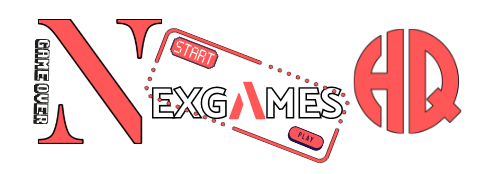
While creating a deck for three distinct characters is fun, the experience is tarnished by various bugs and balancing problems.
Zero Division
Platform: PC
Developers: Robot Cat Limited
Publisher: Astrolabe Games
Release date: July 11th, 2024
Price: $12.99 via digital download, $11.69 launch price until July 25th
Availability: Steam

There are more card builders with roguelike traits besides Robot Cat Limited. It does have a few notable features, though, like its cyberpunk style, multi-deck management, and metagame advancement that lets you carry cards into your next run. There are currently a few noticeable balancing problems and at least a few flaws, just like in other independent CCGs. However, there’s also opportunity when you lead three operators through a sequence of nodes throughout the campaign of the game.
Although Division has an optional tutorial that covers the basics, you’ll need to play the game carefully to pick up most of the subtleties. Three operators make up your team: Specialist, Assault, and Guardian. Naturally, the names of each are derived from their respective roles on your squad, but deckbuilding allows for versatility. For every archetype, you’ll eventually be able to access two more versions. These substitutes add some variation to the game by bringing their own special skills to bear in combat.

Each operator has a mini-hand of cards that appears beneath their character portrait when they are engaged in combat. As many cards as their own AP pool permits, each teammate can play in order to bolster their armor, activate offensive and defensive perks, and deal damage from offensive abilities. Some cards can be applied to any or all of your allies, while others are operator specific (e.g., your Specialist’s ability to create holographic clones).
Your operators also have a direct strike that they can typically employ once every turn. Rally cards can multiply the frequency of these attacks, sometimes allowing your attacker to hit twice, albeit at the cost of her AP being lost the following turn. Furthermore, you can utilize a special skill without using up any of your AP pool thanks to the operator special powers.

Success, predictably, depends on teamwork and trying your hardest even when you’re dealt a terrible hand. For the first, you should play carefully and examine your hands. Playing any card that increases the attack strength of all of your allies and gives you a bonus for each strike after that is one example. Playing the right cards in the right order is just as important to winning as having the best cards.
You may encounter common opponents early on who will weaken the impact of your blows. It’s certain that handling these scenarios will try your patience. Bosses can also be frustrating due to the skills they possess. One such example is the threat that spawns more clones anytime it is attacked. The benefit is that if an operator runs out of health, they will forfeit the round but will return for the subsequent encounter, although with only a percentage of their initial health.

The fact that Division is somewhat flexible is an additional advantage. As an illustration, you may come across a card that allows you to temporarily neutralize the effects of a heavy hitter by swapping the attack and armor ratings of an opponent. As was previously said, your operators can perform many tasks, thus as you gain more cards, you can turn your Guardian into a powerful hitting tank. You can save cards for later runs by using the resource Mnemosynth, which you’ll acquire throughout the game’s conflicts. There’s enough card variation for this, and it can assist to solidify a technique. However, Division definitely needs more diversity.
Furthermore, although Division can benefit from additional balancing, the game’s campaign structure is largely excellent. Your group will traverse many regions in this game, where various icons will indicate boss and subordinate combat, shops, and events that provide branching choices. It’s interesting to note that whenever your team relocates, a supply resource is depleted. When the map is completely depleted, finish it to receive a pleasant incentive for your diligence. However, bugs that occasionally crashed and did things like reclaim unlocked items made the game less enjoyable. Let me conclude by saying that Zero Division used artificial intelligence to create at least some of their artwork. The characters and cards have a generic feel to them, however the makers haven’t revealed the exact percentage yet.

Zero Division cannot be recommended in its current state due to the abundance of excellent CCGs available on Steam. While bugs can be annoying, players will get quite angry if they have to give up their progress. Fans of CCGs may therefore choose to monitor the game’s progress. Handling three decks and developing some team advantages can be enjoyable if these annoyances are resolved.
Review Overview
Gameplay – 65%
Controls – 60%
Aesthetics – 55%
Performance – 50%
Accessibility – 65%
Value – 65%
60%
Flawed
Summary : Right now, Zero Division shows potential as players construct combinations of three decks that work well together. But in between the flaws and balancing concerns, tolerance is just as crucial as strategy.
